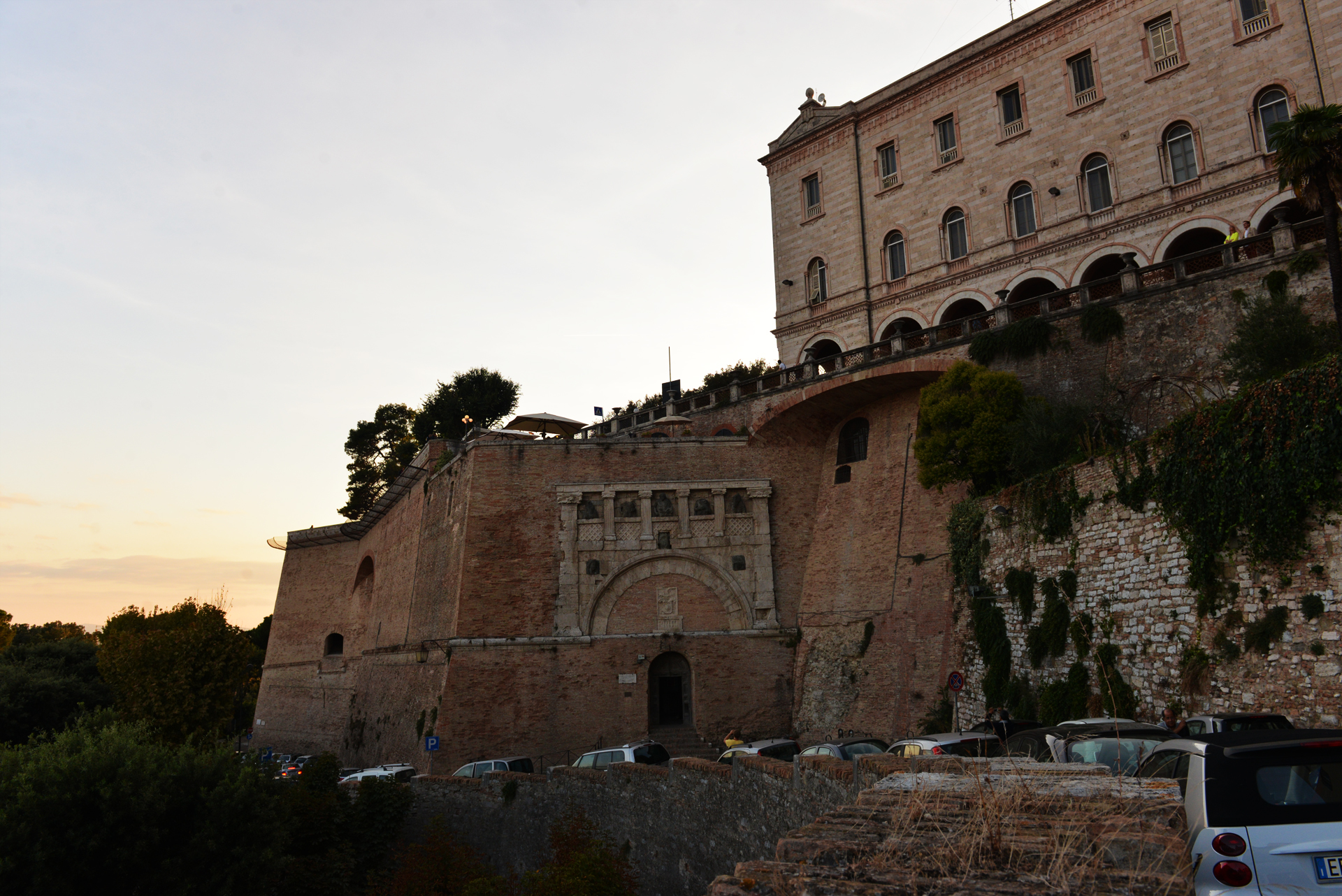Rocca Paolina on:
[Wikipedia]
[Google]
[Amazon]
 The Rocca Paolina was a Renaissance fortress in
The Rocca Paolina was a Renaissance fortress in
 The Rocca Paolina was a Renaissance fortress in
The Rocca Paolina was a Renaissance fortress in Perugia
Perugia (, , ; lat, Perusia) is the capital city of Umbria in central Italy, crossed by the River Tiber, and of the province of Perugia.
The city is located about north of Rome and southeast of Florence. It covers a high hilltop and part o ...
, built in 1540-1543 for Pope Paul III
Pope Paul III ( la, Paulus III; it, Paolo III; 29 February 1468 – 10 November 1549), born Alessandro Farnese, was head of the Catholic Church and ruler of the Papal States from 13 October 1534 to his death in November 1549.
He came to ...
to designs by Antonio da Sangallo the Younger
250px, A model of the Apostolic Palace, which was the main project of Bramante during Sangallo's apprenticeship.
250px, The church of Santa Maria di Loreto near the Rome.html"_;"title="Trajan's_Market_in_Rome">Trajan's_Market_in_Rome.
image: ...
. It destroyed a large number of Etruscan, Roman and medieval buildings, including the Baglioni family's houses in the burgh of Santa Giuliana as well as over a hundred tower-houses, gates, churches and monasteries. It turned the former streets of the historic city centre into underground passageways, which are now open to the public.
The fortress was partially destroyed in 1848 then rebuilt by Pope Pius IX
Pope Pius IX ( it, Pio IX, ''Pio Nono''; born Giovanni Maria Mastai Ferretti; 13 May 1792 – 7 February 1878) was head of the Catholic Church from 1846 to 1878, the longest verified papal reign. He was notable for convoking the First Vatican ...
in 1860 before being finally demolished in 1861 after the city was annexed by the Kingdom of Italy
The Kingdom of Italy ( it, Regno d'Italia) was a state that existed from 1861, when Victor Emmanuel II of Kingdom of Sardinia, Sardinia was proclamation of the Kingdom of Italy, proclaimed King of Italy, until 1946, when civil discontent led to ...
. The underground via Bagliona and the remains of the medieval quarter were then uncovered and restored in 1932, with restoration works in 1965. Part of the supporting wall survives on viale Indipendenza and a bastion on via Marzia, housing an exhibition space and museum.
Buildings and structures in Perugia
{{Italy-struct-stub